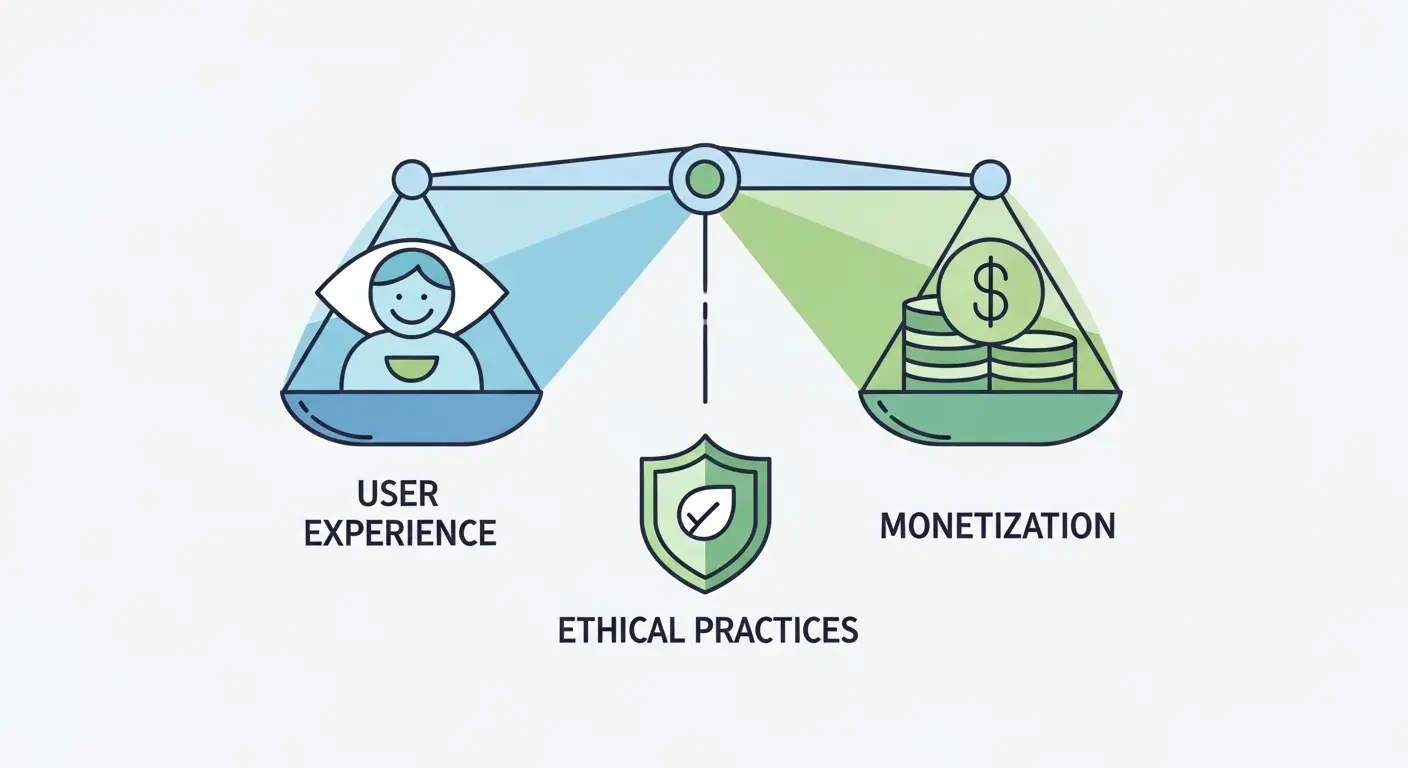Video Advertising Monetization: Complete Publisher Guide
The digital landscape is no longer just dominated by video; it is video. From short-form social clips to feature-length films on streaming services, video content is the primary way users consume information and entertainment. For publishers, this shift represents a monumental opportunity. While display ads remain a foundational revenue stream, video advertising offers significantly higher CPMs, deeper user engagement, and more compelling storytelling opportunities for brands. However, navigating the complex world of video monetization can be daunting. It’s a realm of specific technologies, unique ad formats, and evolving standards that can leave even seasoned publishers feeling overwhelmed.
This comprehensive guide is designed to demystify video advertising monetization. We will break down everything you need to know to build a powerful and profitable video ad strategy. We'll explore the fundamental ad formats like pre-roll, mid-roll, and post-roll; dive deep into the critical technical choice between Client-Side and Server-Side Ad Insertion (CSAI vs. SSAI); unpack how to supercharge your revenue with header bidding for video; and look to the future with strategies for the booming Connected TV (CTV) and FAST channel ecosystem. Whether you’re just starting to incorporate video or looking to optimize a mature strategy, this guide will provide the insights and best practices you need to maximize your revenue.
The State of Video Advertising: A Market in Motion
To understand the importance of a robust video monetization strategy, it’s essential to grasp the scale of the market. The numbers speak for themselves:
- Massive Spend: Global digital video ad spending is projected to surpass $180 billion in the next year, with a significant portion flowing to publishers with premium video inventory.
- Shifting Habits: The average person spends over 100 minutes per day watching digital video. This consumption is increasingly happening across a variety of devices, from mobile phones to large-screen Connected TVs.
- Advertiser Preference: Advertisers are willing to pay a premium for video ad placements because they offer higher engagement and brand recall than static display ads. Video CPMs can often be 5x to 10x higher than their display counterparts.
This explosive growth has created a dynamic ecosystem. Publishers with high-quality video content are in the driver's seat, but only if they have the right technology and strategy to capitalize on this demand. The goal is no longer just to place an ad in front of a video; it’s about delivering a seamless, high-quality viewing experience while maximizing the value of every single ad impression.
Core Video Ad Formats: The Building Blocks of Your Strategy
Before diving into complex technology, it’s crucial to master the fundamentals. In-stream video ads—ads that play within the video player itself—are the cornerstone of video monetization. They are primarily categorized by their placement relative to the content.
Pre-Roll Ads
As the name suggests, pre-roll ads play before the user's selected video content begins.
- Pros: This is the most common and often most valuable video ad format. It captures the user's attention when their intent to watch is highest, leading to high viewability rates. Advertisers love pre-rolls for their prime placement.
- Cons: They can be perceived as intrusive, acting as a gatekeeper to the desired content. If too long or unskippable, they can lead to higher bounce rates.
- Best Practices:
- Keep them short: For non-skippable pre-rolls, aim for 15 seconds or less.
- Offer a skip option: For longer ads (30 seconds), implementing a "Skip Ad" button after 5 seconds is a standard practice that respects the user's time.
- Frequency Capping: Avoid showing the same user a pre-roll on every single video they watch in a short session.
Mid-Roll Ads
Mid-roll ads appear during the video content, similar to a traditional television commercial break.
- Pros: When placed correctly, mid-rolls have the highest completion rates. The viewer is already invested in the content and is less likely to abandon the video. This makes them extremely valuable for long-form content (typically 10 minutes or longer).
- Cons: If placed abruptly, they can be highly disruptive to the user experience, causing frustration. Poorly implemented mid-rolls are a leading cause of viewer drop-off.
- Best Practices:
- Natural Breaks: The single most important rule is to place mid-rolls at natural transition points in the content—between scenes, after a key point is made, or during a chapter change. Don't interrupt a speaker mid-sentence.
- Signal the Break: Use visual cues (like a brief fade-to-black or an "Ad Break" bumper) to let viewers know an ad is coming.
- Don't Overdo It: For a 10-15 minute video, one mid-roll is often sufficient. For a 30-60 minute video, you might have 2-4 ad "pods" (breaks with multiple ads). A proper ad layout optimization strategy is key here.
Post-Roll Ads
Post-roll ads play after the main video content has finished.
- Pros: They are the least intrusive ad format, as they don't interrupt the viewing experience.
- Cons: They suffer from the lowest viewability and engagement. Once the content is over, many users will immediately navigate away or close the tab, never seeing the post-roll ad.
- Best Practices:
- Action-Oriented: Use post-rolls for ads with a strong, direct call-to-action (e.g., "Learn More," "Shop Now"), as the user has finished their primary task and may be more open to a secondary action.
- Complementary Content: Consider using them to promote related videos or content on your own site.
- Lower Priority: Treat post-roll inventory as supplementary rather than a primary revenue driver.
| Ad Format | Pros | Cons | Best For |
|---|---|---|---|
| Pre-Roll | High viewability, high demand | Can be intrusive, risk of bounce | Short-form content, capturing initial attention |
| Mid-Roll | High completion rates, high value | Can be very disruptive if placed poorly | Long-form content (10+ minutes) |
| Post-Roll | Least intrusive | Lowest viewability and engagement | Direct-response campaigns, internal promotions |
The Technical Backbone: CSAI vs. SSAI
Once you’ve decided on your ad formats, the next critical decision is how those ads are delivered. This comes down to two primary technologies: Client-Side Ad Insertion (CSAI) and Server-Side Ad Insertion (SSAI).
CSAI (Client-Side Ad Insertion)
CSAI is the traditional method for delivering video ads. In this model, the user's device (the "client," e.g., a web browser or mobile app) is responsible for managing the ad delivery process.
How it works:
- The video player on the user's device starts loading the main content.
- The player makes a separate call to an ad server to request an ad (e.g., a VAST tag).
- The ad server responds with the ad creative.
- The player pauses the main content, plays the ad, and then resumes the content once the ad is finished.
Pros:
- Simpler Implementation: It's generally easier and cheaper to set up for publishers just starting out.
- Accurate Measurement: Because the ad is handled directly on the client, it's easier for third-party verification services to measure viewability and other key metrics.
- Individual Targeting: It allows for more personalized ad targeting based on client-side data like cookies.
Cons:
- Ad Blockers: CSAI is highly vulnerable to ad blockers, which can easily identify and block the separate calls to ad servers, resulting in lost revenue.
- Latency and Buffering: The process of pausing content, loading an ad, and resuming can introduce latency, leading to the dreaded "spinning wheel" and a poor user experience.
- Inconsistent Experience: The performance can vary wildly across different devices, browsers, and network conditions.
SSAI (Server-Side Ad Insertion) / Dynamic Ad Insertion (DAI)
SSAI, also known as "ad stitching," takes a fundamentally different approach. It combines the video content and the ads into a single, continuous stream on the server before it ever reaches the user's device.
How it works:
- When a user requests a video, the publisher's server first requests an ad from the ad server.
- The server receives the ad creative and "stitches" it directly into the main video content stream at the designated ad breaks.
- The user's video player receives a single, uninterrupted stream that contains both the content and the ads. To the player, it looks like one long video.
Pros:
- Ad Blocker Resistance: Because there's no separate call from the client to an ad server, most ad blockers cannot differentiate between the content and the ad, allowing the ad to play.
- Seamless, TV-Like Experience: It eliminates buffering between content and ads, creating a smooth, professional broadcast-quality experience. This is essential for live streams and CTV.
- Cross-Platform Consistency: The experience is consistent across all devices because the heavy lifting is done on the server.
Cons:
- Complex Implementation: Setting up an SSAI solution is more technically complex and expensive than CSAI.
- Measurement Challenges: Since the client isn't directly involved in the ad call, traditional measurement can be more difficult. However, modern SSAI vendors have developed robust solutions (like sending server-side beacons) to solve this.
Which should you choose? The choice depends on your content and platform.
- For standard on-demand video on a website, CSAI can still be a viable and simpler option.
- For live streaming, Connected TV (CTV), or FAST channels, SSAI is the undisputed industry standard. The seamless experience is non-negotiable for viewers accustomed to broadcast television.
Supercharging Revenue: Header Bidding for Video
For years, the standard for programmatic ad selling was the "waterfall," a sequential process where ad impressions were offered to demand partners one by one until one was sold. This was inefficient and often left money on the table. Header bidding revolutionized display advertising by allowing all demand partners to bid simultaneously in a unified auction. Now, that same technology is transforming video.
Video header bidding works by allowing multiple ad exchanges, SSPs, and networks to bid on your video ad inventory at the same time, before your primary ad server is called. This creates a much more competitive auction environment.
How it Works (Simplified):
- The video player initiates an ad request.
- A header bidding wrapper (a piece of JavaScript code) sends out bid requests to multiple demand partners simultaneously.
- These partners return their bids within a set timeout period (e.g., 200-400ms).
- The winning bid from the header bidding auction is passed to your ad server (like Google Ad Manager).
- The ad server compares this winning bid against any of its own demand sources (like direct-sold campaigns or AdX) and serves the ad from the highest overall bidder.
Benefits of Video Header Bidding:
- Increased CPMs: By forcing all demand partners to compete in a fair and simultaneous auction, publishers typically see a revenue lift of 20-50% or more.
- Greater Transparency: You get a clear view of what each partner is willing to pay for your inventory, unlike the opaque waterfall.
- Reduced Latency (vs. Chained Waterfalls): While it adds a small amount of pre-auction latency, a well-configured header bidding setup is often faster than a long, complex waterfall with multiple passbacks.
Implementation Considerations:
- Player Compatibility: Your video player must be compatible with your chosen header bidding solution (e.g., Prebid.js). Most modern players like Video.js and JW Player have robust support.
- Timeouts: Setting an aggressive but realistic timeout is critical. If demand partners don't respond in time, their bids are ignored. You must balance giving partners enough time to bid with ensuring a fast ad load for the user.
- Wrapper Management: Managing the header bidding wrapper, adding new bidders, and optimizing settings requires technical expertise. Many publishers choose to work with a monetization partner to handle this complexity.
The New Frontier: Monetizing CTV and FAST Channels
The biggest growth story in video advertising today is Connected TV (CTV) and Free Ad-Supported Streaming TV (FAST). CTV refers to any television set connected to the internet, while FAST channels (like Pluto TV, Tubi, or a publisher's own curated channel) are linear, ad-supported streaming channels that mimic the traditional broadcast TV experience.
Monetizing in this environment presents unique challenges and opportunities.
Key Challenges:
- Fragmentation: The ecosystem is fragmented across numerous platforms (Roku, Amazon Fire TV, Apple TV, Samsung Tizen), each with its own technical requirements.
- Measurement: Traditional digital metrics based on cookies and clicks don't apply. The industry is coalescing around new standards for attribution and measurement in the living room environment.
- User Expectations: Viewers expect a high-quality, buffer-free experience akin to broadcast television. This makes SSAI an absolute necessity.
Strategies for CTV/FAST Monetization:
- Ad Podding: Instead of a single mid-roll ad, CTV/FAST monetization relies on "ad pods"—structured commercial breaks containing multiple ads (e.g., a 2-minute break with four 30-second ads). Optimizing the fill rate and CPM of each slot within the pod is a key challenge.
- Programmatic Deals: While open auctions exist, much of the premium CTV inventory is sold via Programmatic Guaranteed (PG) and Private Marketplace (PMP) deals, which give publishers more control over pricing and advertisers access to guaranteed premium inventory.
- Building a Channel: Publishers with a deep library of video content are increasingly launching their own FAST channels to create a new, continuous revenue stream. This is a significant undertaking but can be highly lucrative.
- Hybrid Approach: For many, the best strategy involves a mix of direct-sold campaigns for top-tier advertisers, PMP deals for preferred partners, and a programmatic open auction to fill any remnant inventory. This strategy is also highly effective in app monetization across both mobile and CTV devices.
Best Practices and Optimization Strategies
Implementing the right technology is only half the battle. Continuous optimization is what separates top-earning publishers from the rest.
-
Prioritize the User Experience: A frustrated user is a lost user. Limit ad load, use skippable formats where appropriate, and invest in technology (like SSAI and a good CDN) that ensures fast load times. A poor user experience will always negate any short-term revenue gains from overloading ads.
-
Become Data-Obsessed: You cannot optimize what you don't measure. Track these key metrics relentlessly:
- Fill Rate: The percentage of ad requests that result in an ad being served.
- View-Through Rate (VTR): The percentage of impressions where the user watched the entire ad.
- Ad Completion Rate: The percentage of served ads that were played to completion.
- CPMs: Your revenue per thousand impressions. Analyze this by device, geo, and demand partner.
- Latency: How long it takes for your ads to load. High latency kills user experience and revenue. A deep dive into your data is the first step toward growth. Our analytics guide can help you build a data-first culture.
-
Use a Hybrid Demand Strategy: Don't rely on a single source of demand. The optimal setup combines direct-sold campaigns, a robust header bidding auction, and potentially traditional ad network mediation. For mobile apps, a sophisticated ad mediation platform is essential to make all demand sources compete effectively.
-
Stay Compliant with Privacy Regulations: The ad ecosystem is being reshaped by regulations like GDPR and CCPA. Ensure your consent management platform (CMP) is correctly implemented and that your demand partners are respecting user privacy choices. Ignoring this can lead to massive fines and loss of user trust. The landscape of privacy regulations is constantly changing, so stay informed.
Common Mistakes to Avoid
As you build your strategy, be wary of these common pitfalls:
- Mistake 1: Ignoring Mobile: A significant portion of video is consumed on mobile devices. Ensure your video player and ad formats are fully responsive and optimized for smaller screens.
- Mistake 2: Sticking with an Outdated Waterfall: If you are still using a traditional, sequential waterfall for programmatic video, you are leaving significant revenue on the table. It's time to embrace header bidding.
- Mistake 3: Poor Mid-Roll Placement: Randomly inserting mid-rolls without considering the content flow is the fastest way to drive users away. Take the time to identify natural breaks.
- Mistake 4: A "Set It and Forget It" Approach: The programmatic landscape is in constant flux. New bidders emerge, algorithms change, and viewer habits evolve. You must continuously test, monitor, and optimize your ad setup, from timeouts to ad pod structures.
Conclusion: Your Path to Video Monetization Mastery
The transition to a video-first world is complete. For publishers, this represents the single greatest revenue opportunity of the decade. Success, however, is not accidental. It requires a thoughtful strategy that balances user experience with aggressive yield optimization.
By understanding the core ad formats, making the right technical choices between CSAI and SSAI, leveraging the competitive power of header bidding, and preparing for the CTV/FAST revolution, you can build a formidable video monetization engine. Remember to ground your strategy in data, constantly test your assumptions, and never lose sight of the viewer at the other end of the screen. The world of video ads is complex, but the rewards for getting it right are immense.
If you're ready to unlock the full potential of your video inventory and feel this complexity is best handled by experts, we can help. To learn how our technology and expertise can drive your revenue growth, explore our solutions. Ready for a deeper conversation? Contact our team today or book a demo to see our platform in action.



